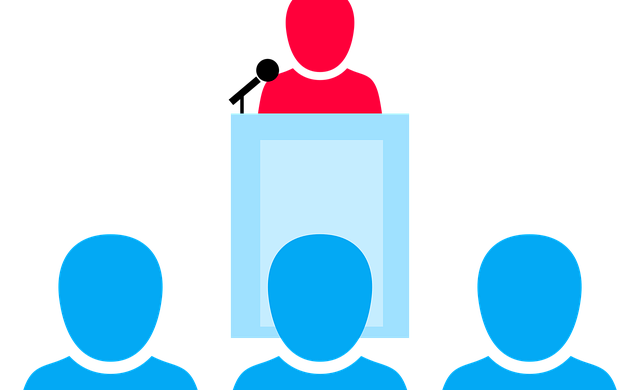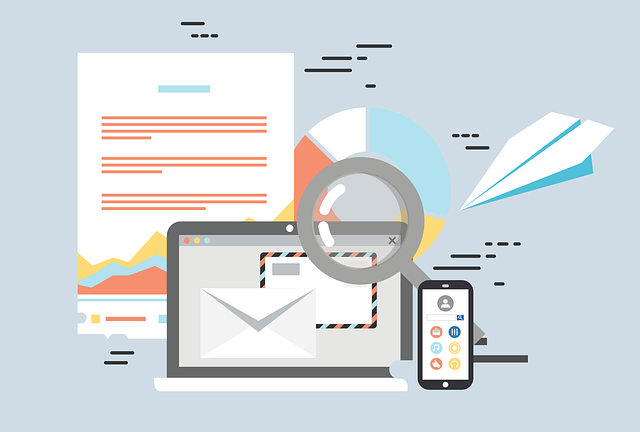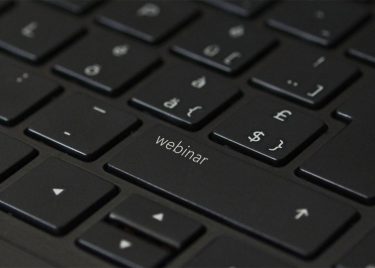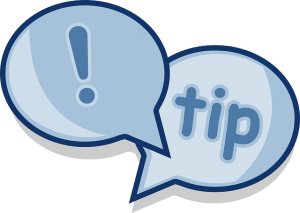Welcome to your one-stop-shop for all things webinar. We're here to guide you, step by step, from the initial planning stage to the final follow-up, and everything in between.
We're going to break down the process, making it manageable and hopefully, a little less daunting.
By the end of this post, you'll have a clear roadmap to help you navigate the winding path to webinar greatness.
Whether you're an entrepreneur looking to grow your business, a teacher reaching out to your students, or an expert in your field aiming to share your knowledge, webinars offer you a powerful tool to achieve your goals.
With a webinar, you'll have the chance to connect with a wider audience, build stronger relationships, and establish your presence in the online world. But like any tool, it's all about how you use it.
So, are you ready to take the plunge? Are you ready to step into the spotlight and let your voice be heard? Let's embark on this journey together.
In the following sections, we'll discuss how to choose the right topic, how to select your audience, what tools you need, how to prepare your content, and so much more.
Let's get started!
Disclosure: Although I receive affiliate compensation at no additional cost to you to support this site that compensation in no way influences my recommendations, which are strictly informed by my 10+ years of online business experience consulting for clients large and small. My aim is to always recommend tools that offer the best return for your investment (for more details, read my Affiliate Disclosure).
Understanding What a Webinar is
Before we dive deep into the nitty-gritty of planning a webinar, let's make sure we're all talking about the same thing. So, what exactly is a webinar?
Picture an online seminar, a digital gathering if you will, where information is shared and knowledge is spread. It's a platform where a presentation, lecture, workshop, or even a demonstration is transmitted over the web.
The magic word here is "interaction." A webinar isn't your run-of-the-mill YouTube video or a one-way information highway. Yes, you're delivering content, but you're also engaging with your audience.
You're not just talking at them; you're talking with them. You're answering their questions, addressing their concerns, and even learning from their insights. It's a give-and-take that makes the experience more engaging and valuable for everyone involved.
So, now that we're clear on what a webinar is, let's move on to the exciting part: organizing your very own.
The Magic in the Planning
Setting clear goals
Setting up a webinar is like embarking on a journey. You wouldn't just jump in your car and start driving without a destination in mind, would you?
The same applies here. The very first step in your webinar journey is setting clear, concrete goals. This is the foundation upon which your entire webinar will be built. So, take a moment to ask yourself, "What do I want to achieve with this webinar?"
Are you looking to educate your audience on a certain topic? Maybe you're hoping to generate leads for your business? Or perhaps you're trying to establish yourself as a thought leader in your field?
Each goal requires a different approach, so it's crucial to nail this down first. It's like your north star, guiding you through each decision and keeping you on track.
Remember, your goal should be specific, measurable, achievable, relevant, and time-bound – that's right, we're talking about SMART goals.
For example, instead of saying, "I want to educate my audience," try something like, "I want to help 200 people understand the basics of digital marketing by the end of my webinar."
See the difference? One is vague and open-ended, while the other gives you a clear target to aim for.
Choosing a topic
Now that you've got your goals figured out, it's time to choose a topic. This is where the fun really starts. Your topic is your bait. It's what piques people's interest and draws them in. So, it's got to be something that resonates with your audience, something they're itching to learn about.
Think about your audience's pain points and interests. What problems are they struggling with? What knowledge are they craving? Use this to guide your topic selection.
Remember, a great topic is like a magnet—it pulls people in and keeps them engaged. It's the promise of value that makes people willing to carve out time in their busy schedules for your webinar.
Don't be afraid to get specific. A webinar on "Healthy Living" might sound appealing, but it's also incredibly broad. A webinar on "10 Easy Ways to Incorporate Exercise into Your Busy Schedule," on the other hand, is much more targeted and offers clear value.
Determining your target audience

The next step in the planning process is determining your target audience. In other words, who are you talking to? Who would benefit most from your topic? These are your people, your target audience.
Understanding who your audience is, is like having a secret weapon. It allows you to tailor your content to suit their needs, interests, and pain points. It's the difference between a generic, one-size-fits-all presentation and a tailored, highly relevant experience.
And let's be real, which one do you think your audience would prefer?
Think about who would be most interested in your topic. Are they beginners or experts? Are they looking for a broad overview or an in-depth analysis? What kind of language do they use? What kind of examples would they relate to?
The more you know about your audience, the better you can cater to their needs, and the more successful your webinar will be.
Remember, your webinar isn't about you, it's about your audience. So, keep them front and center in every decision you make, and you'll be well on your way to a knockout webinar.
Choosing the Right Webinar Tools
Webinar platform
Alright, now that you've got your goals, your topic, and your audience nailed down, it's time to pick your tools. The digital hammer and nails, so to speak.
The most important tool in your webinar toolbox? Your webinar platform. This is the virtual venue where your webinar will take place.
There are numerous platforms out there, each with its own set of features, strengths, and pricing models.
You've got the enterprise-scale guys like Webex, and GoToWebinar. You've got platforms built specifically for small businesses or solopreneurs, like Demio and WebinarJam.
And then you've got the all-in-one platforms like ClickMeeting and BigMarker, which offer webinar hosting along with other tools like email marketing and landing page builders.
Your task is to pick one that fits your needs and budget. Consider the size of your audience, the level of interaction you want, and the features you need.
Do you want to conduct polls during your webinar? Do you need breakout rooms for smaller group discussions? Do you want to record your webinar for those who can't attend live?
Take the time to research and try out a few different platforms before making your choice. Most offer free trials, so you can test drive them before committing. And remember, the most expensive platform isn't always the best.
The best platform is the one that meets your specific needs and helps you achieve your webinar goals.
Audio and video equipment
Once you've chosen your webinar platform, it's time to think about your audio and video equipment. This might seem like a minor detail, but trust me, it's not. High-quality audio and video can make a world of difference in your webinar.
Remember, you want your audience to focus on your content, not how they can't hear you properly or how blurry your video is.
Let's start with audio. A high-quality microphone is crucial. Your audience needs to hear you clearly, without any static or background noise.
You don't need a professional recording studio setup, but a good USB microphone can go a long way. Brands like Audio-Technica and Blue Yeti offer some great options that won't break the bank.
On to video. If your laptop's built-in webcam isn't up to snuff, consider investing in a standalone webcam.
Look for one that offers high resolution (1080p is a good standard) and good lighting adjustments. Brands like Logitech and Razer have a range of options to suit different needs and budgets.
Remember, your audio and video quality reflects on you and your brand. It affects your audience's perception of you and their overall webinar experience.
So, don't skimp on these tools. A little investment can go a long way in enhancing your webinar's quality and your audience's satisfaction.
Preparing Your Webinar Content
Webinar script
Next, you'll want to create a script for your webinar. This ain't a Hollywood movie script, but it's just as important. It's your roadmap, guiding you from start to finish. It should include everything from your introduction, main points, transitions, to your conclusion.
Slides and visuals
Don't forget about slides and visuals. They're the icing on the cake, helping to reinforce your points and keep your audience engaged. Just remember to keep them simple and visually appealing. No one wants to squint at tiny text or decipher complicated graphs.
Marketing Your Webinar

Creating a landing page
Got your content ready? Great! Now, let's get the word out. First up is creating a landing page for your webinar. This is where people will learn about your webinar's topic, the date and time, and of course, where they can register. Make it catchy and concise.
Email marketing
Next, leverage the power of email marketing. Send out an announcement to your email list. Not just once, but several times leading up to the event.
You can use tools like MailChimp or Constant Contact to make this process easier. Don't forget to send a reminder email a day before and on the day of the webinar.
Social media promotion
Don't underestimate the power of social media. Promote your webinar on platforms where your target audience hangs out. Twitter, Facebook, LinkedIn? Go for it. Create engaging posts, use relevant hashtags, and consider paid ads for a wider reach.
Practice Makes Perfect
Alright, you're almost there. But before you go live, make sure to do a dry run. Practice your presentation, test your equipment, and familiarize yourself with the webinar platform. Trust me, it'll help you iron out any kinks and give you a confidence boost.
Hosting the Webinar: Showtime!
Engaging with the audience
Now, it's showtime! Keep your energy up, your tone engaging, and don't forget to interact with your audience. Ask them questions, encourage them to participate. It'll make them feel valued and keep them interested.
Q&A session
Consider having a Q&A session at the end. It's a great way to engage with your audience, clarify any points, and provide additional value.
Post-Webinar Actions
Follow up emails
After your webinar, don't just disappear into thin air. Send a follow-up email thanking participants for their time. You could even provide a link to a recording of the webinar for those who couldn't attend or want to revisit it.
Analyzing feedback
Also, take time to analyze feedback and performance metrics. It'll help you understand what worked, what didn't, and how you can improve for your next webinar. Tools like Google Analytics can come in handy here.
Wrapping Things Up
Remember, creating a webinar isn't just about sharing information. It's about creating an engaging and interactive experience that brings value to your audience.
It's about using the power of technology to connect with people across the globe, to share your passion and expertise, and to create an impact.
But let's be real, it's not always going to be smooth sailing. You might stumble along the way. The technology might fail, your presentation might not go as planned, your audience might not be as responsive as you'd hoped.
But that's okay. Every challenge is an opportunity for learning and growth. And every mistake is a stepping stone towards your next success.
So, go forth with confidence. Take the plunge into the world of webinars. Let your voice be heard and your ideas be shared.
Keep in mind the tips and strategies we've discussed, but don't be afraid to add your unique twist. After all, it's your webinar, your platform, your stage.







